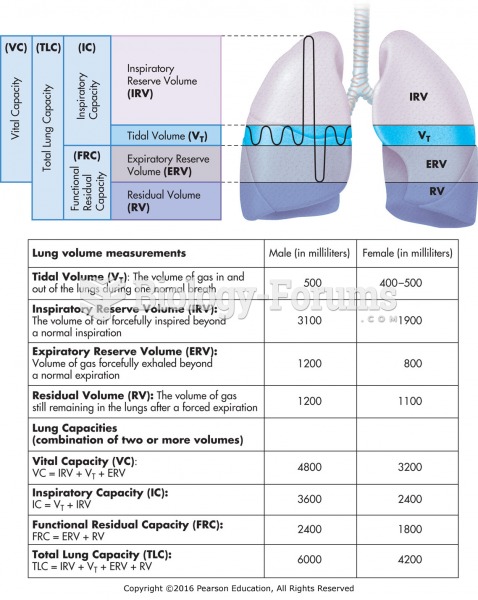The nurse is teaching the parents of a 4-year-old boy about the normal maturations of the child's organs during the preschool years and their effect on body functions.
Which of the following statements accurately describe these changes? Select all answers that apply.
A) Myelination of the spinal cord allows for bowel and bladder control to be complete in most children by age 3 years.
B) The respiratory structures are continuing to grow in size, and the number of alveoli continues to increase, reaching the adult number at about 7 years of age.
C) Heart rate increases and blood pressure decreases slightly during the preschool years; an innocent heart murmur may be heard upon auscultation.
D) The bones continue to increase in length and the muscles continue to strengthen and mature; however, the musculoskeletal system is still not fully mature.
E) The small intestine is continuing to grow in length, and stool passage usually occurs once or twice per day in the average preschooler.
F) The urethra remains long in both boys and girls, making them more susceptible to urinary tract infections than adults.
Question 2
The parents of a boy diagnosed with Hirschsprung disease are anxious and fearful of the upcoming surgery. The mother states, I'm worried about having to care for our son's ostomy. Which intervention would be most helpful for the parents?
A) Explaining to them about the diagnosis and surgery
B) Having a wound, ostomy, and continence nurse meet with them
C) Reinforcing that the ostomy will be temporary
D) Teaching them about the medications used to slow stool output







